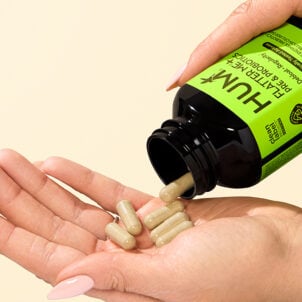Peppermint is more than just a garnish for your iced tea or a breath freshener. In fact, people have used this plant for centuries as a traditional remedy. From digestion to headaches, peppermint provides impressive health benefits. So whether you choose to steep it in tea, enjoy its refreshing aroma, or take it in supplement form, incorporating it into your daily routine is a simple and beneficial way to support your overall well-being.
This article will show you the nutritious power of peppermint plus simple ways to incorporate it into your daily routine.
What is Peppermint?
Peppermint (Mentha × piperita) is a natural cross between watermint and spearmint, making it a hybrid plant. It’s often called an aromatic plant due to its distinct minty yet sweet scent, known for providing a cooling sensation and a refreshing aroma.
For centuries, these leaves have been used as a medicinal plant throughout Europe and the Middle East to treat various ailments. Today, it’s grown and enjoyed worldwide in many forms, including:
- To enhance flavor: one can easily find peppermint-flavored foods, beverages, and even dental hygiene products. Its cooling flavor makes it especially popular in seasonal items such as holiday drinks and baked goods.
- As an aroma: Its clean scent is commonly found as an essential oil, in candles, car fresheners, cosmetics and other products that tout a minty or refreshing aroma.
Peppermint offers more than just flavor and aroma. People use peppermint supplements and teas to reap its health benefits quickly and naturally.
Peppermint Health Benefits
Peppermint offers a range of benefits making it a powerful addition to most health and wellness routines.
Here are some of the top peppermint health benefits:
Digestive Support
Peppermint has a history of traditional use for supporting healthy digestion and soothing GI discomfort. Research shows that in oil form, peppermint may help ease uncomfortable digestive symptoms by relaxing muscles within the gastrointestinal tract. It may also help address sensitivity within the gut and nervous system. Together, these actions may offer relief from common digestive discomforts like indigestion, gas, and bloating.
That’s why this leaf is one of the three medicinal herbs in HUM’s Flatter Me supplements, which are clinically studied to help reduce bloating.
Relieves Headaches
Peppermint is also a popular remedy for tension headaches. When used topically, usually in oil form, it may be able to effectively reduce headache intensity as soon as 15 minutes, according to older studies and traditional use. Again, this is likely related to peppermint’s muscle-relaxing ability.
Although more recent studies have found mixed results, topical peppermint is still widely accepted as a treatment for headaches.
Dental Hygiene Support
As you know, peppermint is commonly used in dental products like toothpaste, mouthwash, and breath mints. Because of its antibacterial nature, peppermint can do more than refresh your breath. Peppermint can help improve your oral microbiome, or the bacteria composition in your mouth- to help lessen your risk for poor gum health.
Multiple studies also suggest that peppermint oil can boost salivation, which has positive effects since a dry mouth can worsen breath odor. Additionally, menthol, the main active component in peppermint, can help improve your breath by neutralizing odors.
Using peppermint-based dental products can keep your mouth feeling clean and healthy.
Of course, incorporating peppermint into your daily routine in other ways can also help you reap its benefits.
Peppermint Tea Recipe
One of the easiest ways to boost your peppermint intake is to drink it in tea form. Follow this simple recipe for Iced Peppermint Tea to get in on all of the benefits that peppermint has to offer.

What you’ll need:
- 4-6 fresh peppermint leaves (or 2 peppermint tea bags)
- 4 cups of water
- 1 tablespoon honey (optional)
- Lemon slices for garnish
- Ice cubes (if enjoying as iced tea)
How to prepare:
- Boil the Water: Bring 4 cups of water to a boil in a pot or kettle.
- Steep the Leaves: Add the fresh leaves (or tea bags) to the hot water. Let it steep for 10-15 minutes for a strong, minty flavor.
- Sweeten (Optional): Stir in a tablespoon of honey while the tea is still warm if you enjoy your tea sweetened.
If you’re making iced tea:
- Chill: Remove the leaves or tea bags and let the tea cool. Then, refrigerate for about 1 hour until chilled.
- Serve: Pour the tea over a glass of ice cubes and garnish with fresh lemon slices for added flavor.
Pro tip: if you’re struggling with your digestion or bloating, enjoy this tea hot to sooth your digestive tract and try taking digestive enzymes with your meal like those found in HUM’s Flatter Me formula.
The Conclusion
In summary, this plant with powerful benefits. Whether you’re looking to soothe your digestion, ease a headache, or up-level your dental hygiene, it is an effective choice.

Can Taking Pictures of Your Food Improve Your Nutrition and Form Healthy Habits?

The G.O.A.T of Debloat: Introducing HUM’s New Flatter Me Plus, for Fast Bloating Relief and Long-Lasting Regularity

What the Color of Your Poop Says About Your Health





